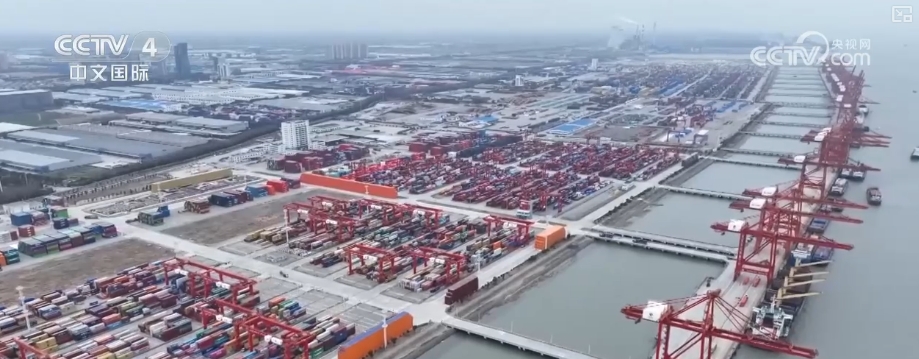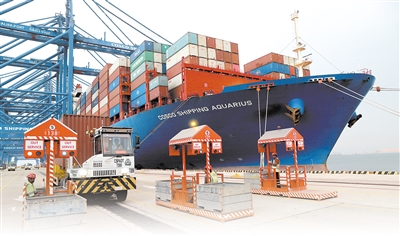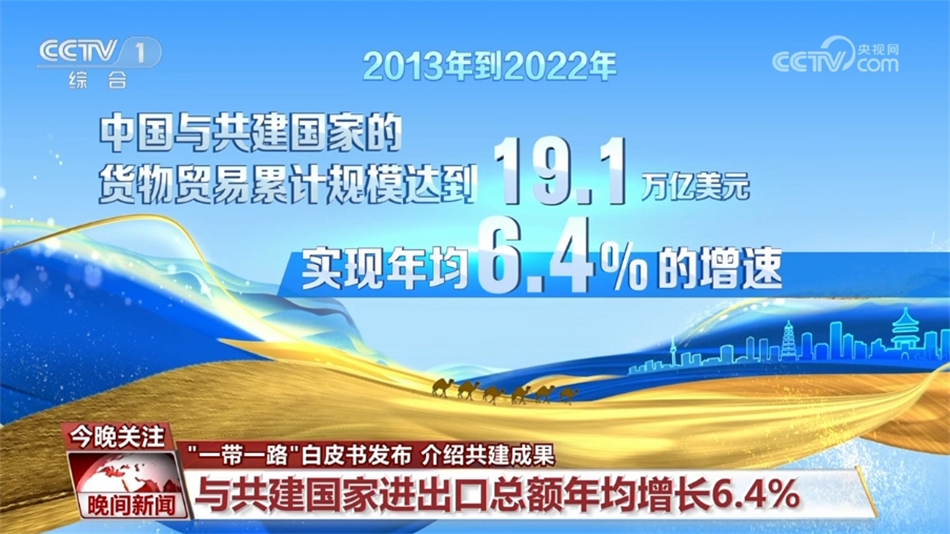How Important Is Xinjiang? As Long As It Is There, China's Rise Will Be Unstoppable!
How Important Is Xinjiang? As Long As It Is There, China's Rise Will Be Unstoppable!
Introduction In the second half of the 19th century, when the entire country was eroded by internal and external troubles, a century-old debate was staged within the Qing court. At that time, the situation in Xinjiang was critical. Agubai brazenly invaded and Tsarist Russia occupied the rich Yili, but the court did not agree.
In the second half of the 19th century, when the entire country was eroded by internal and external troubles, a century-old debate was staged within the Qing court.
The situation in Xinjiang at that time was critical. Agubai brazenly invaded and Tsarist Russia occupied the rich Yili, but there was a disagreement within the court. Most people believed that Xinjiang should be abandoned and resources should be concentrated to consolidate coastal defense.
Only the veteran Zuo Zongtang resisted the opposition and carried the coffin to protect Xinjiang. What kind of value does this land far away hide from the sky that can be defended by important officials at the cost of their lives? And today, a hundred years later, how did it jump from the frontline of the past to the key to driving China's rise?

How thick is the family background?
Many people’s concept of Xinjiang is far away. Xinjiang has deserted Gobi and uninhabited lands that are hundreds of kilometers long. In fact, these ideas are one-sided.
Xinjiang is the largest province in the country, with 1.66 million square kilometers of land, accounting for one-sixth of my country's total area. From a strategic perspective, this is definitely a natural barrier.
Big means an unparalleled strategic depth, and more importantly, its location. Xinjiang is located in the absolute heart of the Eurasian continent, bordering 8 countries in one breath.
In ancient times, this was the throat of the Silk Road. Today it became the gateway for China to open to the west. All national games on land could hardly avoid this core area.

Mr. Sun Yat-sen had a thorough understanding of the past and said bluntly that he planned the continent, and that he meant that anyone who wanted to make a difference in the entire Asian continent was an unavoidable chess eye.
Of course, it is not enough to have geographical location. Xinjiang’s real family is an amazing wealth buried under the land. This is simply a strategic resource library tailor-made for industrialized countries.
Coal, oil, natural gas, uranium, and other modern industries' black and golden blood can find a place in Xinjiang. Our country has been subject to energy security issues for a long time. The existence of Xinjiang itself is the confidence and ballast for my country's economic development.

Therefore, Xinjiang's rich products cannot be summarized by the four words "Sweet fruits and sweetness". It is a super existence that integrates geographical hubs, strategic rears, energy bases and the source of the industrial chain. It is this solid family foundation that makes any visionary politician in history dare not despise this land at all.
Two thousand years of storm
Xinjiang has been no place to transform itself since ancient times, and it has always been closely intertwined with the main plot of the Central Plains dynasty. The beginning of the story can be traced back to 60 BC.
That year, Emperor Xuan of Han established the Western Regions Protectorate, and Xinjiang was officially incorporated into China's territory for the first time. From that moment on, no matter how the Central Plains changed dynasties, its jurisdiction and recognition of the Western Regions became a political inertia that transcended the dynasty.

In the prosperous Tang Dynasty, the two major protectors were established, Anxi and Beiting, which made the management work so solidly, but there were always twists and turns in history. The Qing Dynasty's national strength declined in the 19th century, and Xinjiang ushered in the most dangerous moment it has been recorded in history.
In 1865, the warlord Agubai, the Central Asian Warlord, took advantage of the chaos to invade and establish a puppet regime. A few years later, the Tsarist Russia in the north also came to take advantage of the situation. In 1871, it blatantly sent troops to invade the richest Yili area in Xinjiang. The double blow almost tear Xinjiang out of China's territory.
At this time, the fatal question was placed in front of the Qing court. Should I save it or not? At that time, the coastal defense faction represented by Li Hongzhang believed that the country had limited financial resources and should give priority to consolidating defenses in the southeast coast and wrestle with the Westerners. As for the remote barren land in the northwest, it would be better to give up.

This short-sighted view was still very popular at that time. Fortunately, we had Zuo Zongtang, who almost used his own strength to fight the entire court's abandonment theory.
The deafening saying that the re-Xinjiang defended Mongolia, and the defending Mongolian defended the capital directly pointed out the linkage effect of Xinjiang on the entire national security. In his opinion, once Xinjiang is lost, Mongolia will be directly exposed to the threat of Tsarist Russia. Once Mongolia is out of protection, the gates of the capital will be opened and the entire North China will become the front line.
Agreeing to Zuo Zongtang to lead the army to the Western Expedition was one of the few things Cixi did. In April 1876, Zuo Zongtang, who was nearly 70,000 Qing troops who had pieced together, resolutely set off on the expedition.

This seemed to be a gamble with a slim chance of winning at the time. Logistics supplies, weapons and equipment, and military expenditure were all hell-level problems, but he overcame all difficulties and finally successfully recovered the entire Xinjiang area except Yili.
Then, through diplomatic negotiations, the Sino-Russia Ili Treaty was signed in 1881. Although part of the territory was paid, I finally took back the flesh of Ili.
According to the current viewpoint, Zuo Zongtang's Western Expedition was definitely not just a military victory, but also a reconfirmation of the national and national spirit.
It told the world with practical actions that Xinjiang is a new homeland and an inseparable part. The World War laid the western boundary of modern China and also retained the broadest strategic space for the subsequent rise of China.

New Silk Road
If Zuo Zongtang's recovery of Xinjiang was to preserve the physical ballast for China's rise, then today's Belt and Road Initiative ignited the engine to the world on this ballast.
Xinjiang has now become the well-deserved core area of the Belt and Road Initiative, and is also the main hub of the western channel of the China-Europe Express.
The once remote closure has now become a golden advantage connecting the two continents. The China-Europe freight train is using Urumqi as the assembly center to open a powerful land transportation network.
In 2024, there were 16,400 trains entering and leaving through Alasshan Pass and Horgos, accounting for more than half of the total number of national operations.

The traffic volume of trains has stabilized at more than 10,000 for five consecutive years, and the cumulative total is approaching 86,000. On average, more than 40 steel camel fleets are entering and leaving here every day, efficiently exchanging goods made in and out of China and Asia and Europe.
This is the efficiency revolution led by China. In the past, it took at least one week from Urumqi to Almaty, and there was no efficiency advantage at all. But now, by optimizing the stable operation of the route and the full schedule, we have compressed the running time by 60%, and easily achieved next-day delivery.
In order to further improve efficiency, my country's customs, border inspection and railway departments have established a normalized dialogue mechanism with Kazakhstan and other countries and launched a railway fast-transport model.

Now the customs clearance time for entry and exit has been shortened to within 1 hour of exit, and within 16 hours of entry, and the joint inspection is even faster than 20 minutes. This is the new efficiency dominated by China!
Conclusion
Today, there are 23 transportation routes through Xinjiang, reaching 19 countries and 26 cities in Europe and Central Asia. Local chemical products, agricultural and sideline products in Xinjiang, as well as daily necessities and machinery and equipment from all over the country, are constantly moving to the world through these new Silk Roads.
Looking back, from the Western Regions Protectorate two thousand years ago to Zuo Zongtang carrying his coffin to the west expedition, and then to tens of thousands of trains whistling by today.
As long as Xinjiang is here, China's rise will be unstoppable, and it can provide a continuous stream of strategic support for it.
Go to Xinjiang to do mining? ! Panoramic analysis of Xinjiang mining rights investment
Mining Club





